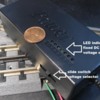I do a lot of work in the Caribbean building renewable energy power plants. A big part of these projects include community infrastructure improvements such as rebuilding schools, putting in water supplies to the more rural village areas and teaching modern approaches to organic/holistic farming techniques. I do a lot of this on my own, (with the client's money, gladly donated).
There are a lot of these little kids that are fascinated by trains as I have let them watch videos on my laptop while working on a school or other project. I was wanting to take a couple RTR sets to Jamaica for the little kids in a couple of schools to play with.
Knowing that any electrical devices brought from a 60Hz country to a 50Hz country results in failure of the motor within a short time time period, does anyone know how the internal electrical motors on a Lionel or MTH (non-european) locomotives hold up to a 50Hz system? I was wanting to bring some of my older Lionel and Rail King MTH sets with me, for the kids.
Am I limited to purchasing MTH euro models brand new? Those are quite $$$$ for an elementary school donation.
Thanks in advance for you help.








